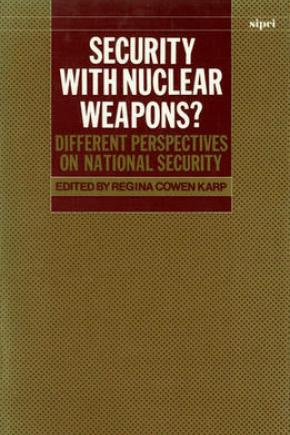Security with Nuclear Weapons? Different Perspectives on National Security
Security With Nuclear Weapons? examines the commonalities and differences in political approaches to nuclear weapons both within and between three groups of states: nuclear, non-nuclear and threshold. The chapters explore the evolution of thinking about nuclear weapons and the role these weapons play in national security planning, and question the official security rationales offered by the nuclear weapon states for the maintenance of nuclear capabilities. For the non-nuclear weapon states, the book presents an analysis of alternative ways of assuring security and foreign policy effectiveness. For the threshold states, it examines the regional contexts within which these states maintain their threshold status. Security With Nuclear Weapons? transcends traditional East-West approaches to analysis of nuclear issues by giving equal prominence to the issues of nuclear proliferation and non-nuclearism, The book also provides a comprehensive analysis of how current approaches to nuclear weapons have evolved both within and among the groups of countries under study.
Part I. Introduction and overview
The continuing nuclear challenge
Regina Cowen Karp
Part II. Nuclear weapon states
1. The United States: Nuclear decision making, 1939–89
William H. Kincade
2. The United States: Nuclear weapons and grand strategy
Robert J. Art
3. The Soviet Union: Nuclear weapons and their role in security policy
Allen Lynch
4. The Soviet Union: Domestic and strategic aspects of nuclear weapon policy
Sergey Koulik
5. The United Kingdom
Stuart Croft and Phil Williams
6. France
Klaus Schubert
7. China
Gerald Segal
Part III. Nuclear threshold states
8. Conceptions of nuclear threshold status
George H. Quester
9. Argentina and Brazil
Virginia Gamba-Stonehouse
Appendix 9A. Declaration of Iperó (Joint Declaration on Nuclear Policy)
10. India and Pakistan
Praful Bidwai and Achin Vanaik
11. Israel
Yair Evron
Part IV. Non-nuclear weapon states
12. Maintaining non-nuclear weapon status
Harald Müller
13. Canada
John Barrett
14. Sweden
Lars Wallin

